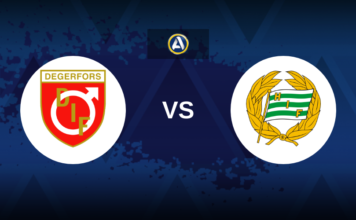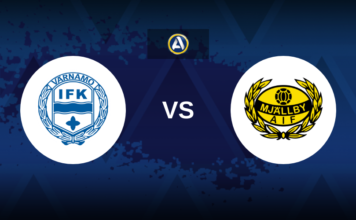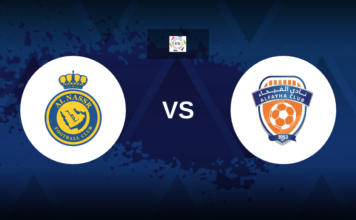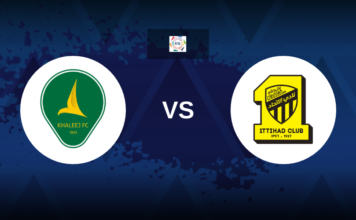Once touted as the heir to Messi, Ronaldo, and Neymar, Paulo Dybala’s career is a story of brilliance, timing, and missed moments. But is there still one last act left in his script?
He was supposed to be the heir — the natural successor to the golden generation of Messi, Ronaldo, and Neymar. With a wand of a left foot, dazzling footwork, and a magnetic smile, Paulo Dybala burst onto the scene like a comet. Early on, his game carried an aura of destiny — goals, flair, vision, and that intangible spark that made fans believe they were watching something truly special.
Every touch carried the promise of greatness. For a moment, he wasn’t just a star — he was the star. And yet, somehow, it never quite happened. No dramatic fall. No scandal. No career-ruining injury. Just a slow, quiet fade — a tale of missed opportunities, managerial mismatches, and systems that never quite suited him.
As he enters his 30s, Dybala remains an elite player, a world champion, a gifted artist. But the prophecy remains unfulfilled. Not because he wasn’t good enough — but because football, like life, isn’t always fair. Sometimes, even the brightest talents are at the mercy of timing and circumstance.
The Rise of a Jewel
Born in Laguna Larga, Argentina, Dybala was nicknamed La Joya (The Jewel) early on. At just 17, he scored 17 goals in 38 appearances for Instituto, breaking club records and showcasing maturity beyond his years. In 2012, he moved to U.S. Città di Palermo for €1.9 million — a fee many questioned at the time. But Palermo’s eccentric president Maurizio Zamparini believed in him.
It took time, but by the 2014–15 season, Dybala had exploded: 13 goals and 10 assists in Serie A. A playmaker who could drop deep, thread passes, or score from anywhere — he had it all. The top clubs came knocking.
In summer 2015, Juventus FC — Italy’s dominant force — signed him for €32 million (rising to €40 million). Many doubted how he’d fit into such a gritty, defensive team. But under Massimiliano Allegri, Dybala thrived. With Pirlo, Vidal, and Tevez gone, he stepped up, scoring 23 goals and assisting seven more in his debut season.
Dybala quickly became a fan favorite — a blend of technical genius, intelligence, and elegance reminiscent of Roberto Baggio. Then came his global coming-of-age moment: a Champions League masterclass against FC Barcelona in 2017, where he scored twice in the first half of a 3–0 win.
The Shift: From Star to Sidelined
But football evolves. And Dybala, a free-roaming creator, didn’t fit easily into the modern game’s rigid tactical systems. His preferred role — behind a striker or as a second striker — began to disappear.
Then, in 2018, everything changed. Cristiano Ronaldo arrived at Juventus. The team was reshaped around the Portuguese superstar. Dybala’s fluidity clashed with Ronaldo’s need for structure and service. From talisman, he became an afterthought. Despite coming off a 26-goal season, his influence waned. Between 2018 and 2020, his numbers dropped. His joy faded.
He never blamed Ronaldo publicly, but the shift in dynamics was clear. The team no longer belonged to him. And that trajectory never fully recovered.
The Injuries and the International Struggles
Dybala’s career was also haunted by poorly timed muscle injuries. Never career-threatening, but always disruptive. In 2020–21, he played just 20 matches and contracted COVID-19 twice. Under new manager Andrea Pirlo, Juventus struggled, and Dybala faded into the background.
New talents emerged — Federico Chiesa, Moise Kean — and suddenly, Dybala was no longer untouchable.
His international career was no less frustrating. Behind Messi and Di María in Argentina’s hierarchy, Dybala rarely started in major tournaments. In the 2022 World Cup, he played just 17 minutes — although he did coolly slot home a penalty in the final shootout against France.
A New Chapter at Roma
In 2022, Dybala left Juventus after seven seasons, 115 goals, five Serie A titles, and a 2019–20 Serie A MVP award. He joined AS Roma on a free transfer — a move that gave him the chance to be the centerpiece again.
Under José Mourinho, he dazzled. His debut goal against Monza — a trademark curling effort — was a statement. He ended the 2022–23 season with 18 goals and eight assists, helping Roma reach the Europa League final.
But the old themes persisted. Injuries. Thighs. Hamstrings. He missed more than 10 games that season. Mourinho publicly admitted frustration — not with Dybala’s attitude, but his body’s unreliability. Roma adored him, but they were still a Europa-level side. Dybala was no longer at the Champions League table or Ballon d’Or conversations.
The Problem of Timing
Dybala hit his peak just as football was changing. The role of the classic No.10 — his natural habitat — was fading. Today’s game demands pressing forwards, tireless runners, and transition monsters. Players like Kylian Mbappé, Erling Haaland, and Vinícius Júnior embody this modern mold.
Dybala, like Isco, James Rodríguez, and Mesut Özil, felt like a throwback to a bygone era — magical in tight spaces, slow in transitions. Unlike others, he never quite adapted. Stuck between being a support striker and a central playmaker, he became a square peg in a round hole.
What Now?
At 31, Paulo Dybala isn’t done. Far from it. Technically, he’s still among Europe’s best. His passing, control, and vision remain world-class. With the right manager and the right system, he can still shine.
Could he get one final move to a Champions League-level club? Perhaps Atlético Madrid, Napoli, or even a romantic return to Palermo under a new project?
He may never reach the superstardom many expected — but he was never a failure. Dybala’s story isn’t about falling short. It’s about a generational talent miscast by time and circumstance.
And who knows? The final chapter hasn’t been written yet.







